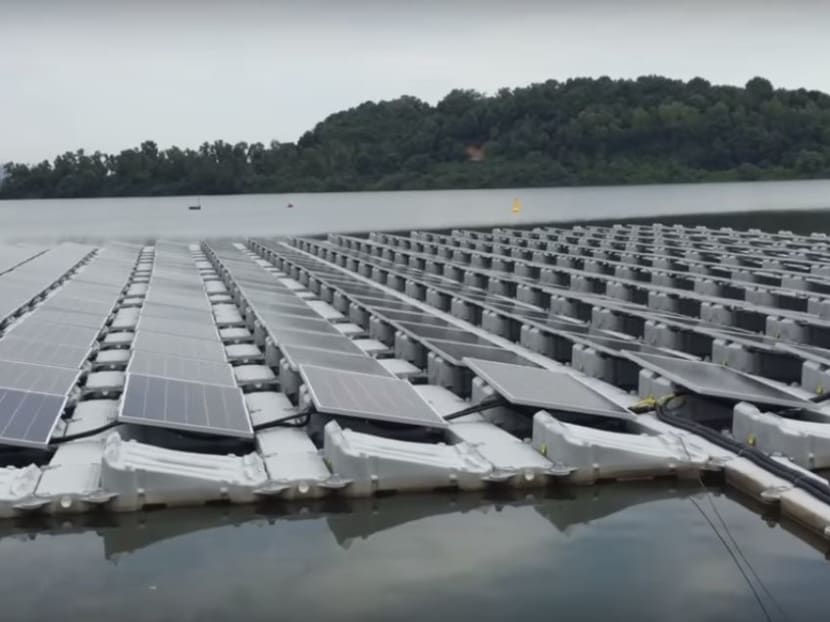HDB looking into deploying floating solar panels in open sea
SINGAPORE — To accelerate the adoption of solar energy in the Republic, the Housing and Development Board (HDB) is looking into setting up floating solar panels in the open sea.

The system has since been deployed to support a floating solar system in Tengeh Reservoir, located in Tuas, earlier in May.
SINGAPORE — To accelerate the adoption of solar energy in the Republic, the Housing and Development Board (HDB) is looking into setting up floating solar panels in the open sea.
To do so, the HDB announced on Sunday (July 8) that it will start a research collaboration with landscaping firm, ISO Landscape to begin research to test its modular system — a support structure that can hold solar panels — in open sea conditions.
The agreement, which will be signed on Tuesday at the World Cities Summit, will cover the study and development of a floating solar system for coastal marine conditions, and will look at how to combat harsher conditions such as stronger winds and wave action.
HDB chief executive officer Cheong Koon Hean said the statutory board has been spearheading solar initiatives and accelerating solar adoption across the island in the past 10 years.
“One way to further harvest Singapore’s solar energy is to look beyond the sky to the sea. This is a practical approach considering Singapore’s land constraints,” he added.
Currently, a large majority of solar panels are installed on the rooftops of HDB blocks, with more than 2,400 blocks installed or being fitted with solar panels. By 2020, about 5,500 HDB blocks will be fitted with or identified for solar installation.
However, as solar energy generation is dependent on surface area, Singapore’s land constraints remain a challenge, said the HDB, hence the decision to look at floating solar farms on water bodies.
On water, the solar panels can potentially receive maximum sunlight as these water bodies are typically free of obstruction.
HDB’s latest move comes after its modular system — designed in-house by their engineers — was successfully implemented in Punggol Waterway in 2011, creating a floating wetland system.
The advantages of the modular system, which utilises a unique interlocking solution to create a light-weight structure with high strength and rigidity, allows flexible configuration in any size and shape to carry heavy loads. It can also be easily assembled and placed anywhere on the water surface.
The system has since been deployed to support a floating solar system in Tengeh Reservoir, located in Tuas, earlier in May.
The HDB partnered with Million Lighting Co to develop a 100 kilowatt peak (KWp) floating solar system under the Tengeh project, which started in January this year. This system comprised of 864 modules, with each module able to support up to 75kg.
Together, they support 368 solar panels and inverters, weighing some 9,400 kg. The floating solar farm at Tengeh was officially launched in May, and is estimated to generate about 120 MWh of electricity a year, reducing carbon emissions by 60 tonnes annually.
With that success, the HDB is studying the expansion of its use in areas beyond greening. One possibility being looked into is the use of this system to hold solar panels on water bodies to harvest solar energy.






